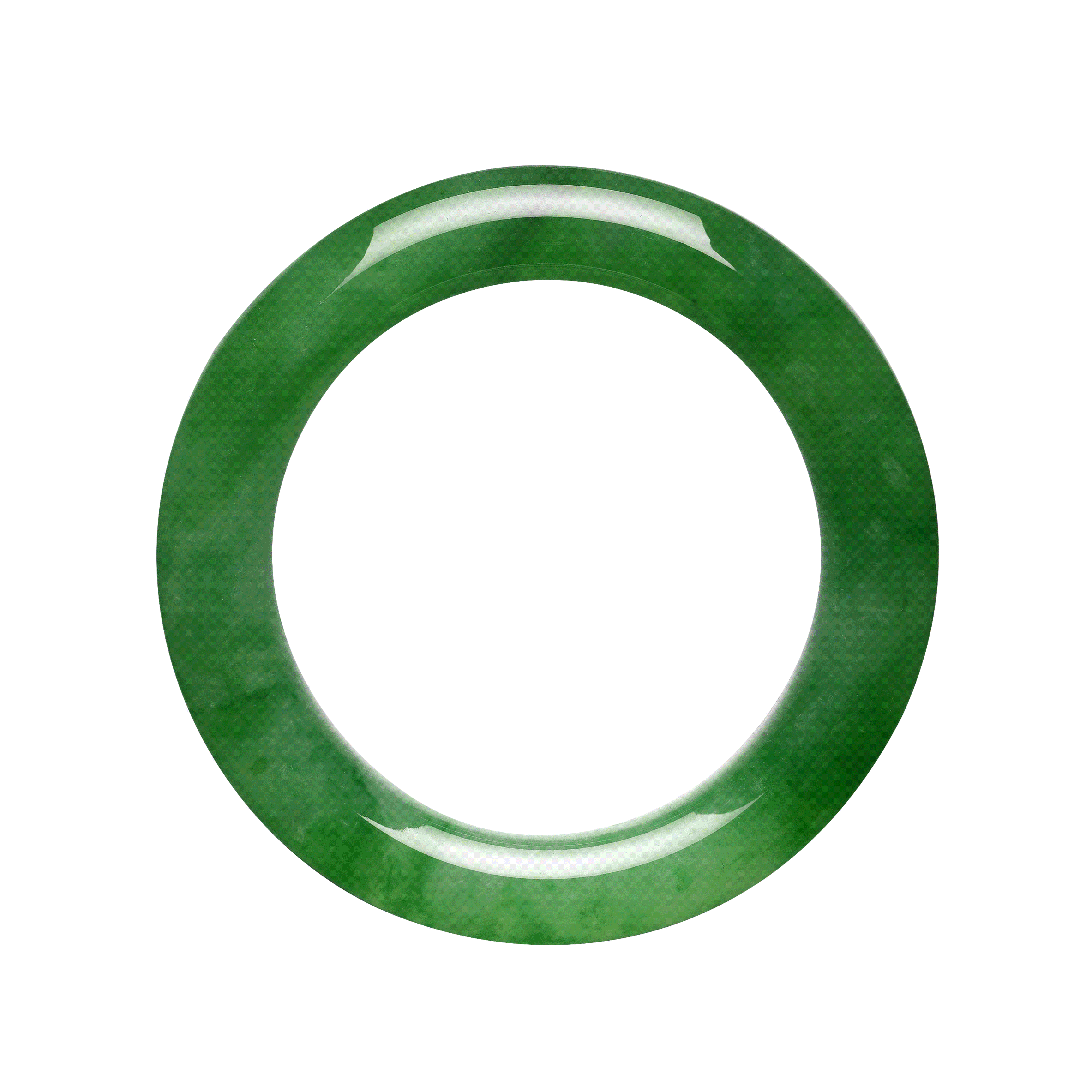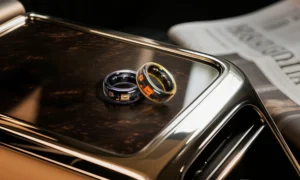More and more people are beginning to realize that the reliable channels for buying expensive watches and jewelry products are not limited to brand stores and official e-commerce platforms. Art auction houses are coming to the fore with their own professional and exclusive sources of goods, which has also promoted high-end watches and jewelry to become the new hot business and sales growth point of international first-line auction houses in recent years.
The fundamental reason for the competition among head players, including Sotheby's, Christie's and Fuyis, is the continued and robust demand for hard luxury units in the global market.
According to the UBS Art Basel Global Art Market Report for three consecutive years, regardless of region, age and collection interest, the purchase and collection of hard luxury (jewelry, gems and watches) by high net worth people in the world ranks among the top three in all luxury goods, comparable to art, and far higher than other luxury items such as collection-grade design furniture, antiques or sports car.

A very interesting observation is that, as hard luxury categories, brand jewelry and brand watch 1 have very different market performance in the secondary market, which is the top market institution and international auction house. According to the data results for the first half of 2023, the watch business of international auction houses is very dependent on the collection and sale of brand watches. However, for jewelry, whether it is necklaces, earrings or brooch rings, the business line of brand jewelry does not account for the high level of its jewelry auction business.
What exactly is the cause of this distinct market performance? We summarize the market performance of the jewelry and watch divisions of the three international auction houses in the first half of 2023 and find that differences in purchasing and storage standards, supply-side structures and the habits of the collector community all have an impact.
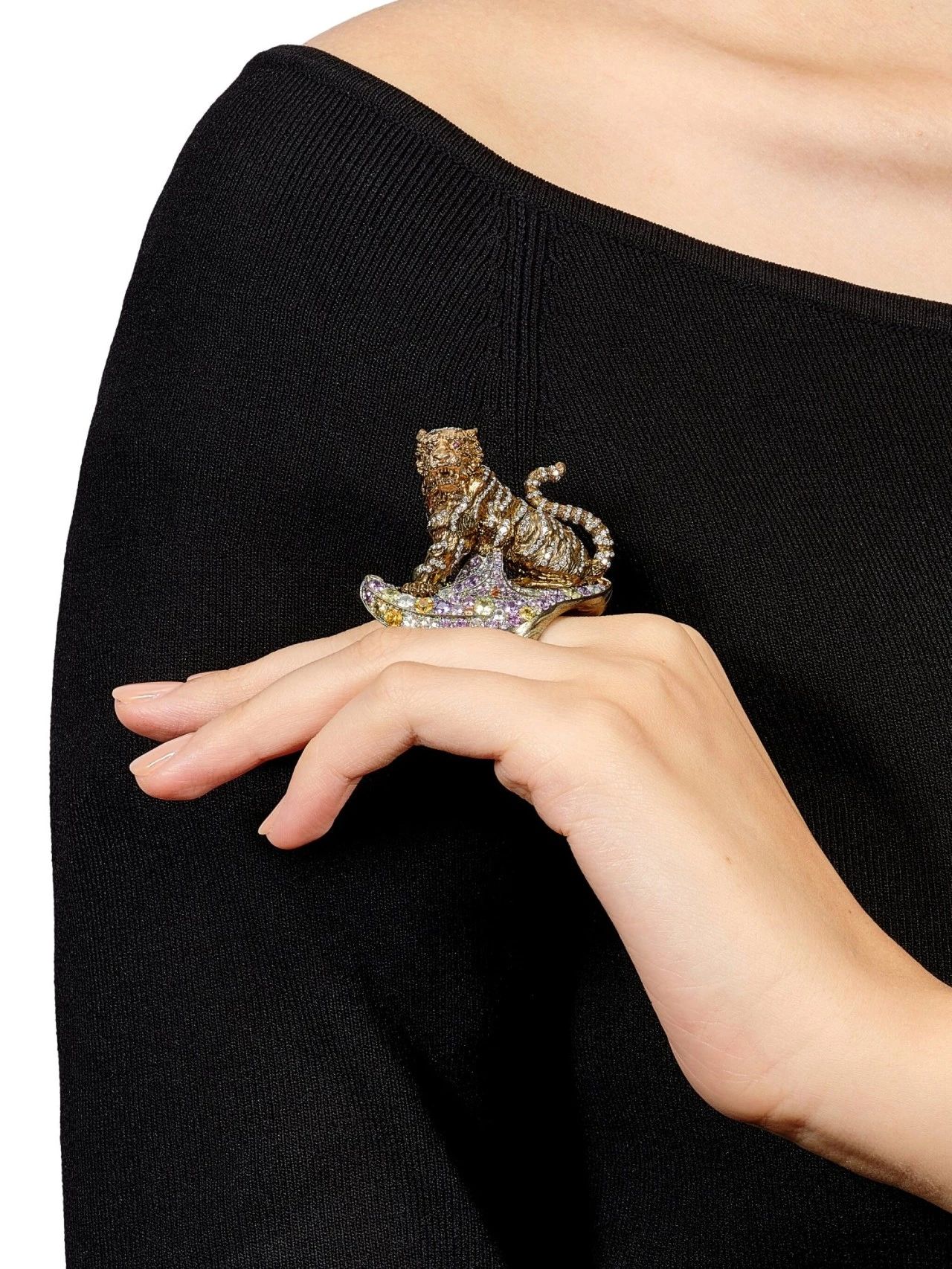
* Image source: Christie's *
Editor's note: The evaluation criteria of famous luxury brands of watches and jewelry are not the same, nor are they one-to-one. Considering the number of lots collected by Sotheby's, Christie's and Fuyis Asian auction houses in the first half of 2023, as well as the sales network and popularity of relevant brands, the eight selected watch brands are Patek Philippe, Rolex, Eppy, Cartier, Bulgari, Omega, Earl and Constantin; the eight jewelry brands selected are Cartier, Harry Winston, Treasure Dragon, Van Cleef & Arpels, Tiffany, Chammy Paris, Bulgari and Chanel.
# World-Class Treasure Watch Reproduces Shooting Field
# Robust demand for online business of related categories
As of June 30, 2023, the jewelry and watch unit auction will generate a total of about HK $1.992 billion (about 1.838 billion yuan RMB) in online and offline auctions of Christie's, Sotheby's and Fuyis, the three major international auction houses in Asia, with 2,334 pieces of jewelry and watches sold. This result accounted for about 1/4 of the total sales of the three auction houses in the same period.
Whether in Asia or globally, the main business of international first-tier auction houses is still art and antiques, but the market share of hard luxury categories has grown steadily in recent years, especially in Asia. Yu Wenhao, chairman of Sotheby's jewelry and watch department, said that thanks to the seamless economic development of mainland China in recent years, the jewelry and watch auction business in Hong Kong auction market has maintained a steady growth trend after the millennium. By 2014, the category's total auction volume in Asia had reached nearly 1/3 of the global total, and Hong Kong auctions were on a par with many established luxury auction markets, such as Geneva and New York.
No matter what kind of auction, the auction house will collect the rare products in the market and plan some units as its marketing core to facilitate the collective bidding of buyers in the market. But at the same time, when it comes to extremely valuable auction items, the auction house will plan a separate auction unit for them to attract collectors to bid centrally at that time.
This type of auction is not common-Christie's held single auctions for single lots of Chang Yu and Xu Beihong in 2020 and 2021 respectively-but in the first half of 2023, there were two auctions planned for single rare lots in the three major auction houses, all from watch brand Patek Philippe.
First, when Fuyis auction house celebrated its new Asian headquarters, it announced that it would sell the 96-Quantieme Lune Patek Philippe watch, which was once treasured by the last emperor of the Qing Dynasty, Puyi. Previously, only seven watches of the same model were known, and this one was the eighth and had never appeared on the market. For this reason, Fuyis, together with other relics of Puyi, such as the inscription fan and diary, planned a thematic auction of “Royal Tibetan Patek Philippe Special”, which was finally sold for HK $48.5 million (including commission).
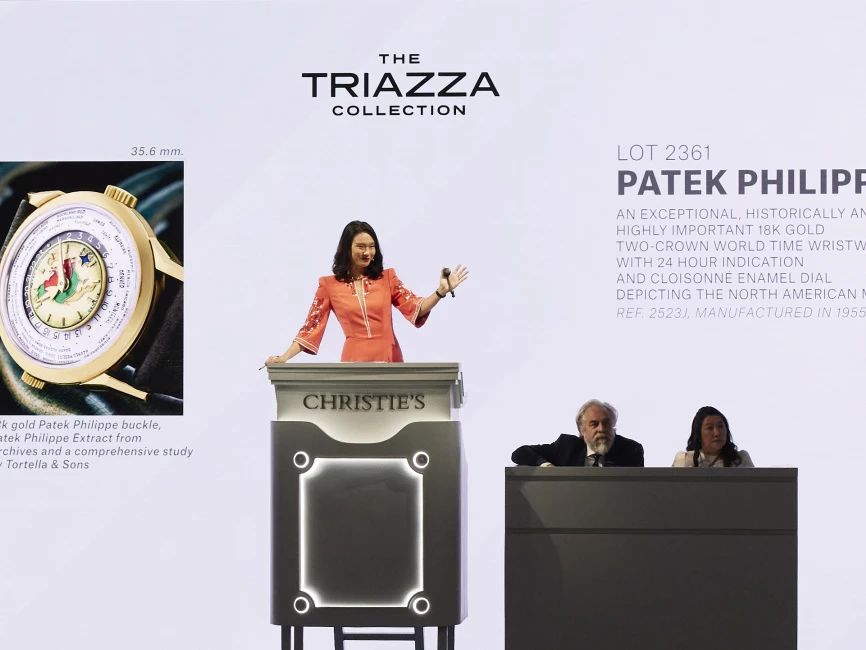
Puyi once treasured Patek Philippe 96 Quantieme Lune watch. Photo credit: Fuyis/Jess Hoffman
Puyi once treasured the Patek Philippe 96 Quantieme Lune watch, as well as his notebook of daily miscellany. Photo credit: Fuyis/Jess Hoffman
Second, Christie's held a single item auction for the Patek Philippe antique watch model 2523 HU DE. The watch was made in 1955 with a double crown of cloisonne enamel dial and is considered to be one of the most outstanding works in the antique Patek Philippe complex watch. The watch was finally sold for 66.62 million Hong Kong dollars (including commission), becoming the most expensive watch in the Asian auction market in 2023.
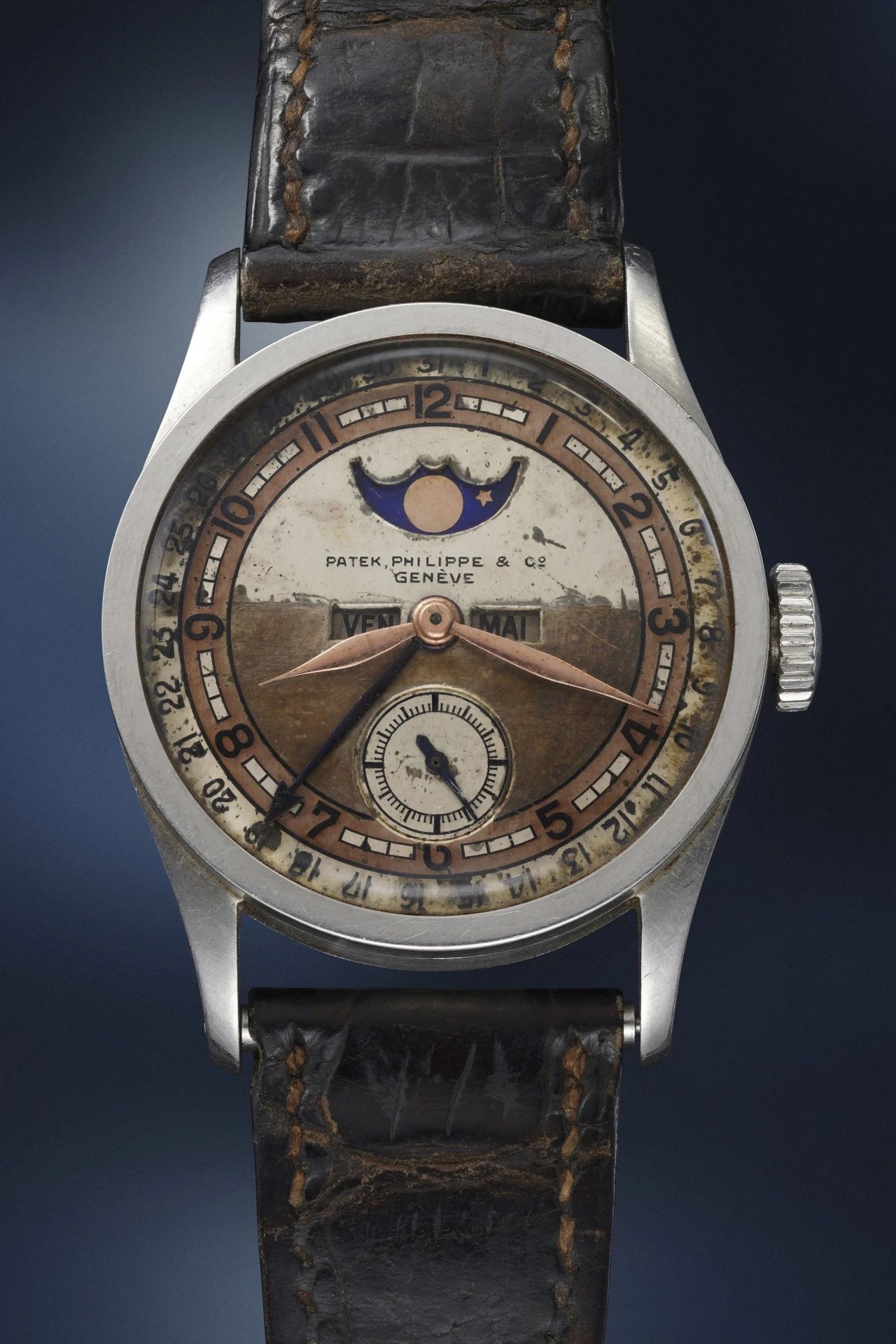
Image source: Christie's
It is very suitable for wrist watches and jewelry units to be sold through online auctions, because compared with valuable rare works of art, there are many pieces of watch jewelry but the average value of single items is not high.
As of June 30, 2023, the online auction of watches and jewelry units of the three auction houses had a turnover of HK $0.214 billion, with a total of 1112 items. The number of online auctions in the three auction houses in this unit is almost equal to the number of offline on-site auctions, but their sales only account for about 10% of the department's total sales.

Although online auctions of watches and jewelry are not as expensive as on-site auctions, competition remains fierce because online auctions generally leave purchasers plenty of time to bid. Judging from the overall market performance, the transaction rate of online auction is slightly higher than that of offline auction. The average turnover rate of online auctions of jewelry and watches by the three auction houses is higher than that of their on-site auctions (95% VS 90.5%).
Yu Wenhao, chairman of Sotheby's Jewelry and Watch Asia, said: “In the recent The Luxury Edit held by Sotheby's, some collectors said that after bidding, they might be overtaken by other participating buyers before the auction ends, so that the budget can be reinvested in other auctions. This is also the fun of online auctions. We leave more bidding time, participation and decision-making power to collectors.”
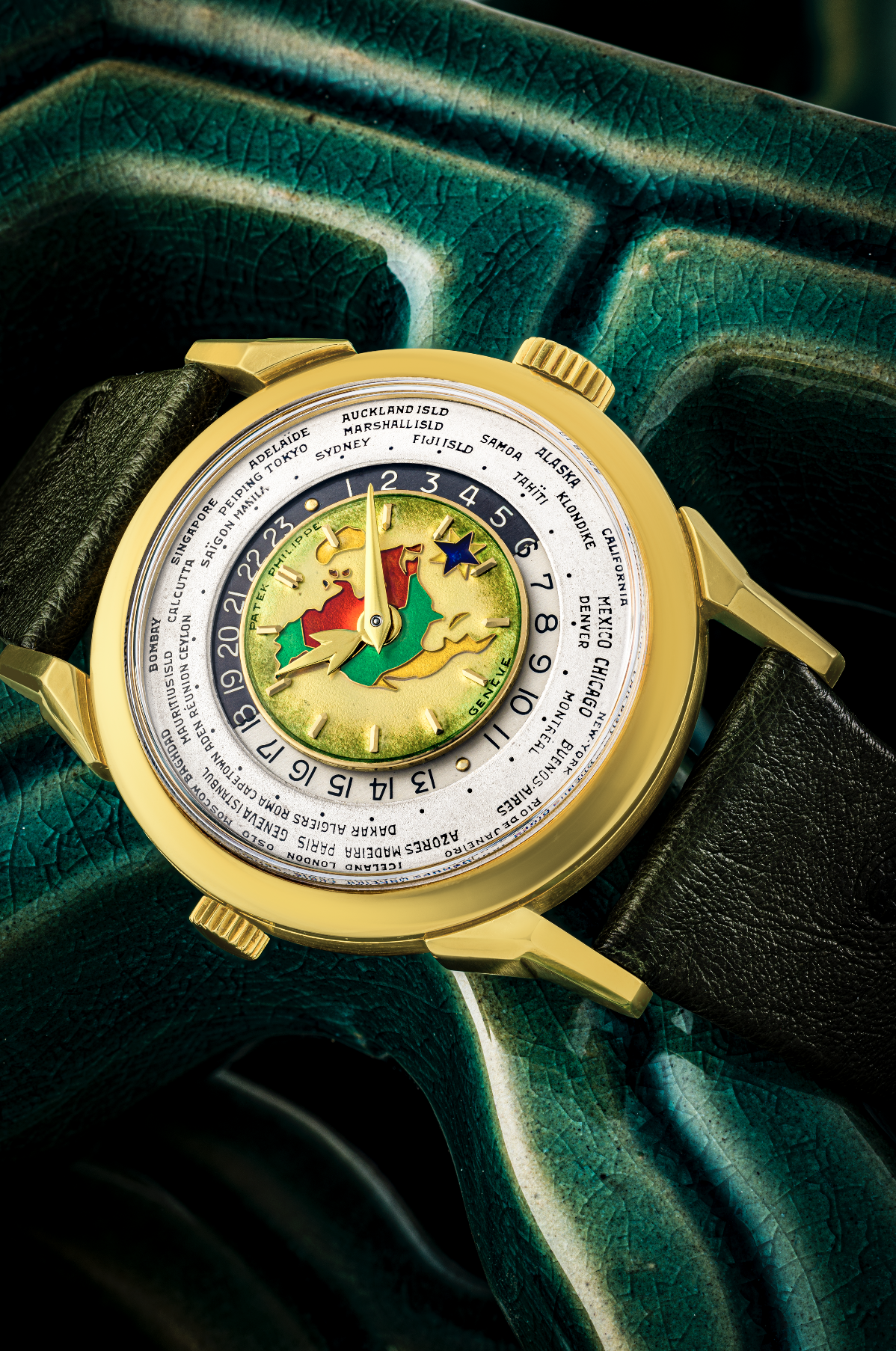
# Brand watches dominate the auction market
# Brand jewelry and other jewelry 28 split market
Watch products are a kind of “entry-level collectibles” that are popular, with various price levels and easy to be accessed. Since 2020, the primary market of high-end watches has often been in short supply.
Vogue Business once reported that “no matter where you live, if you want to buy Rolex, it's hard to buy. There is no stock anywhere, and the same is true for Patek Philippe and Abbey.” This inventory shortage has also resulted in the high prices and high market concentration enjoyed by these high-end brand watches in the auction houses in the secondary market.
According to our rough statistics, the turnover of eight brands of watches, including Patek Philippe, Rolex, Abbey, Vacheron Constantin and Cartier, in the first half of this year in the three auction houses accounted for 76% of the results of the entire watch department of the three auction houses, and the number of pieces solicited for auction reached 78% of the total number of pieces auctioned.
Different from the watch auction unit, the value created by brand jewelry in the related business of the three major auction houses is not high. Brand jewelry is of great value to the market promotion of auction houses. Whether it is a heavy on-site auction like Spring and Autumn Auction or an online auction, auction houses are used to focusing on the brand jewelry collected in the current season.
However, in the first half of this year, eight well-known jewelry brands, such as Cartier, Baoshirong, Van Cleef & Arpels and Tiffany, contributed only 23.4 per cent of the total value of the category to the three auction houses, and only 23.6 per cent of the total number of requisitioned pieces.
Since the beginning of this year, among the ten most expensive pieces of jewelry auctioned by the three auction houses, only the ninth and tenth items are from brands. They are respectively a diamond necklace of Harry Winston. The nine main stones weigh 67.51 karat and have no time inside. They were sold by Sotheby's auction house. The other is from Bulgari's “Royal Sri Lanka Blue” natural sapphire with diamond necklace. The sapphire is unheated and heavy 118.35 karat, sold by Fuyis Auction House.
Harry Winston | Diamond Necklace, 9 main stones with a total weight of 67.51 karat are all D-color internal flawless diamonds. Image source: Sotheby's
Bulgari | “Sri Lanka Royal Blue” natural sapphire with diamond necklace, 118.35 karat, sapphire is not heat treated. Photo Source: Fuyis
# Purchase and collection standards, supply-side structure and collector groups
# Different habits cause brand watches and jewelry
# Different performance in the Asian auction market
Jewelry and watches are two important categories in the hard luxury category, and the auction market mechanism can well reflect the market's enduring demand for this category and its intrinsic value. But no matter from the sales or quantity, brand jewelry in the Asian auction market can not reach the mainstay status embodied in the brand watch, what is the reason behind this?
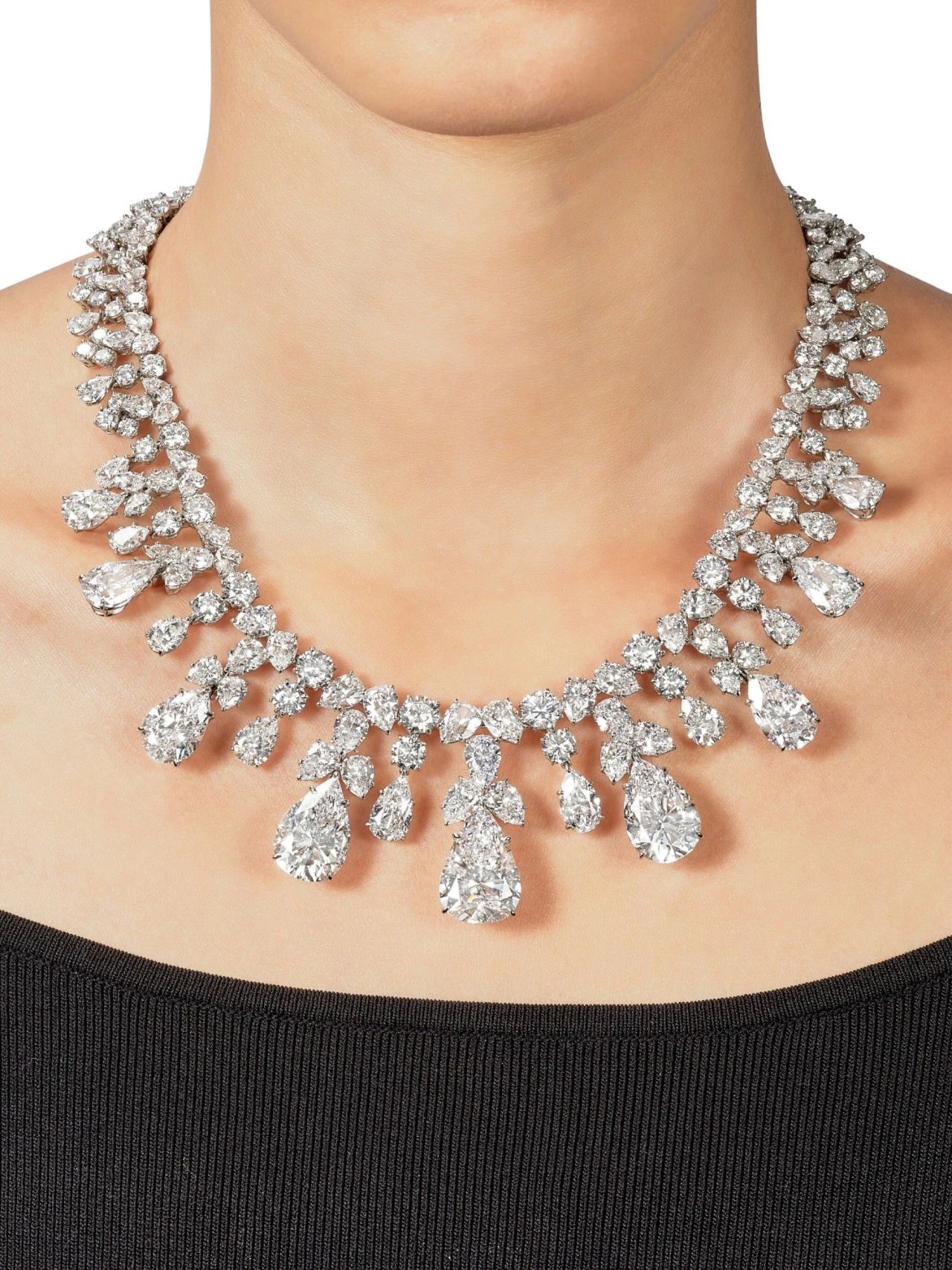
Photo Source: Fuyis
**1) Different purchase and collection standards * *
Collectors have very different standards for purchasing watches and jewelry. Ms. Mao Guojing, Asia Pacific Director of Christie's Academy of Fine Arts and Christie's Auction Officer, said that in her opinion, the collection of watches emphasizes technical cognition, and the value of watches can be judged according to certain factors such as science and technology, production technology, etc. Such relatively standardized purchase and collection standards are beneficial to watchmakers with a history of 100 years and give them the right to make valuable decisions.
On the contrary, the collection of jewelry is very personal, each piece of jewelry reflects the owner's taste aesthetic, and its historical uniqueness also causes scarcity. For example, jewelry is closely related to the development of fashion history. Ladies and ladies need to dress up in a variety of social occasions, and jewelry craftsmen need to design jewelry with matching shapes. These historical stories all add value to the jewelry.
Therefore, compared with watches, precious jewelry on the market, more emphasis is placed on the uniqueness of its design and history, as well as the historical status of its brand or workshop to reflect the value, and these are the resources that the brand cannot monopolize or re-engrave.
2) The supply-side structure of the primary market is different * *
Compared to the high-end watch industry is often operated in the form of large companies, the high-end jewelry (Fine Jewlry) industry is more fragmented, for the auction house to collect the standard of high-priced jewelry (High Jewlry), the brand's market concentration is not as strong as the high-end watch industry.
High-end jewelry emphasizes unique design, exquisite craftsmanship and artistic creativity; at the same time, it emphasizes the scarcity of main stones on jewelry. As far as the former is concerned, star designers in the market are always a minority. They are human resources that brands desire but are not available. As for the latter, some excellent main stone raw materials are unstable on the supply side. For example, jadeite is extremely popular in the high-end jewelry market in Asia, but strictly speaking, only the jadeite produced in Myanmar is qualified. Their hardness meets the standard, but their supply is very limited due to the extremely turbulent political factors in their country, such a supply can not meet the luxury brand bulk, even a small amount of design and production of jewelry to meet the regional market.
Only in its high-end hard luxury custom line, such scarce materials as jadeite, sapphire and yellow diamond can be seen, and the natural scarcity of high-end jewelry made by brands in the primary market is transmitted into the secondary market.

Image source: Christie's
**3) Collectors have different behavior habits * *
In addition, as an important commercial institution in the secondary market of commodities, the performance of auction houses is inseparable from the market sentiment and habits of the collected commodity owners. In recent years, compared with the jewelry market, collectors in the watch market are younger because the use of watches is more flexible. Although jewelry and watches are important accessories for people to attend social activities, watches are more unisex than jewelry, and are more low-key in line with the social inertia of most contemporary people.
Driven by this, the brand has become a business card and a market premium. But also because the purchasing habits of young collectors are very different from those of the older generation, it is easier to change hands to collect objects. In contrast, jewelry collectors are older and mature. Whether it is recently purchased jewelry or ancestral objects, they are not easy or willing to sell these collections. The old works of those brand jewelers with a century of craftsmanship still lie quietly in the jewellery boxes of some dignitaries and ladies, facing the endless stream of the world, waiting for a moment to amaze the world.

Image source: Christie's
(Source: Vogue Business)
